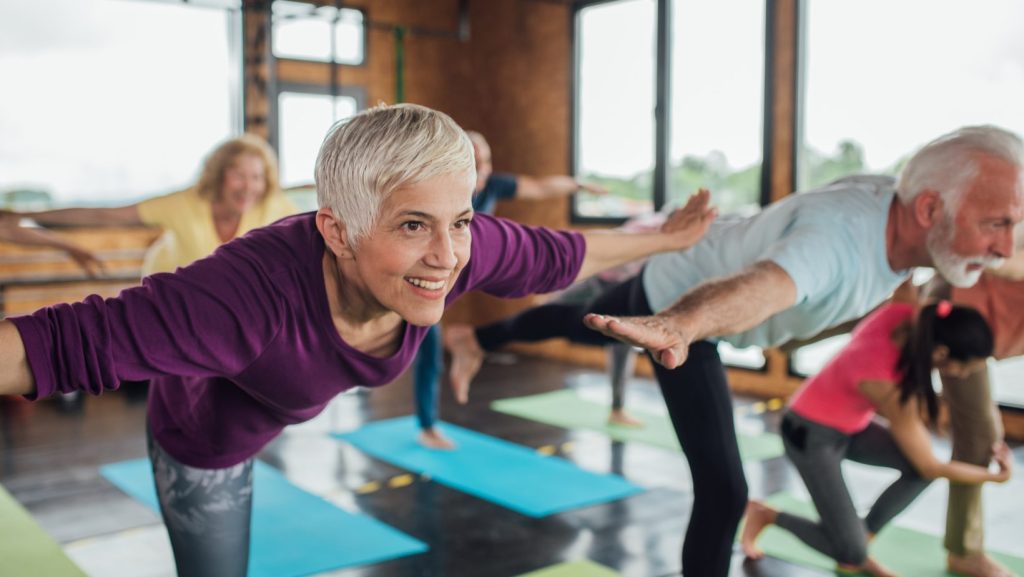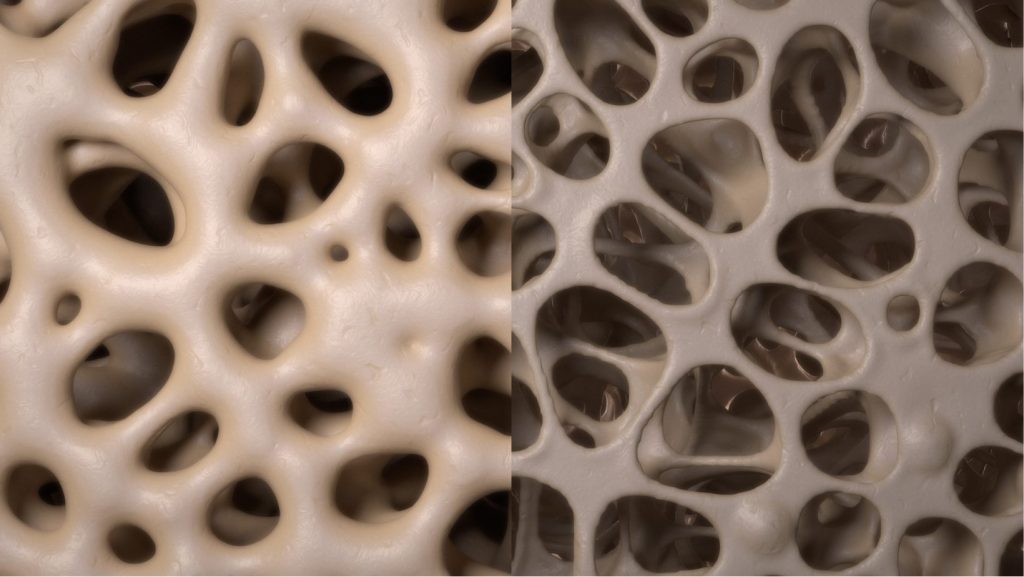
Did You Know?
1. Osteoporosis is usually not diagnosed until a fracture (i.e. broken bone) occurs, because there are no clear symptoms earlier in the disease progression
2. 29% of women aged 75+ years old had osteoporosis compared to 10% of men
3. Older age groups are more affected, increasing with age1
What Is Osteoporosis?
Osteoporosis is weakening of bone to the extent of it being at increased risk of breaking (i.e. sustaining a fracture). Bone tissue is constantly being broken-down and replaced to sustain healthy and strong bones and maintain bone density. In childhood, old bone is broken down and is quickly replaced with new bone, reaching its peak bone density at about 20 years old. The rate of bone replacement is greater than the rate of breakdown, so overall bone strength increases.

As we get older the rate of bone repair/replacement slows. eventually that the rate of bone breakdown occurs quicker than it is replaced, and bone mineral density gradually reduces. This is known as Osteopenia. As this process continues, osteoporosis occurs when the bones become increasingly fragile and weak placing a higher risk of fracture to the individual in places such as hip, wrist and upper arm.
What Causes Osteopenia To Become Osteoporosis?
Osteopenia is a result of low calcium intake as it is essential for the growth and maintenance of healthy bones. Additionally, hormone changes with age, smokers and women, especially following menopause are at increased risk of developing Osteoporosis. At this level of bone loss, there are no symptoms until it progresses to osteoporosis where bone density continues to reduce. Osteoporosis symptoms involve back pain, reduced height, poor posture and higher risk of fracture bones.3
How Can I Prevent Osteoporosis?
Regular weight bearing exercises and resistance (strength) training assists in producing strong bones, maintaining bone mass, reducing the rate of bone loss and avoiding injury.4
Weight bearing exercises are known as body weight exercises including low-impact exercises such as walking and gardening. However, high-impact exercises are more beneficial and can be progressed from low-impact exercises. These exercises include running, jumping and climbing stairs.
Resistance (strength) training involves lifting weights and makes bones stronger by applying stress to them. Weight lifting can start from low weight then progress to higher loads once your body becomes better adapted to the load.
Balancing and flexibility exercises are also important to implement, especially in aged women to increase stability to prevent falls.
Exercising With Osteoporosis
It is vital to continue to get exercise if you have osteoporosis however, exercises may need to be adapted depending on the individual; exercise should be low-impact, have low falling risk and should avoid rotating. It is important to sustain exercise levels and avoid becoming sedentary, as this will lead to further loss of bone mass.5
Follow these cue’s to ensure safety whilst exercising:
– Sustain proper posture
– Use a stable surface for assistance e.g. bench or hand rail
– Bend from knees when lifting not your back or hips
Exercise Physiologists Are Trained To Help Manage Osteoporosis
Exercise physiologists are degree-qualified professionals with extensive training in using exercise to help manage osteoporosis. Your program begins with a personalised assessment to make sure we fully understand your goals and your current levels of fitness and strength. This ensures that your program is safe as well as effective. We also find out about your exercise preferences – which types of exercise you like and which you don’t. This is important because for exercise to be effective it has to be consistently done and progressed over time, and if we know which type of exercise your enjoy then you are far more likely to make it a consistent routine.
Once you have had your initial assessment we develop your exercise program. At your second session we take you through your program, making sure that your technique is correct and each exercise is at the right level of difficulty for you. Then, as you progress and improve, we progress your exercises either by replacing some exercises fully with other harder exercises, or sometimes by adjusting your current exercise to give more gradual increases in difficulty.
Our Central Performance facility in Surry Hills has a fully equipped gym where your exercise physiologist will work with you during your sessions. They will also give you a structured home exercise program that will fit in with your lifestyle and time available to exercise. There are flexible options available for structuring your program to include home exercise as well as sessions in the clinic. Please call us on 9280 2322 or click below to contact us for more information, or to book online.
Reference
1. Osteoporosis, What is osteoporosis? – Australian Institute of Health and Welfare. (2020). Australian Institute of Health and Welfare.
2. Osteoporosis. (2020). National Institute on aging.
3. Osteopenia (Low Bone Density): What Is It, Prevention, Symptoms, Causes & Treatment. (2022). Cleveland Clinic.
4. Exercise to prevent osteoporosis. (2019). MyDr.com.au.
5. Once Is Enough: A Guide to Preventing Future Fractures: NIH Osteoporosis and Related Bone Diseases National Resource Centre. (2018).

